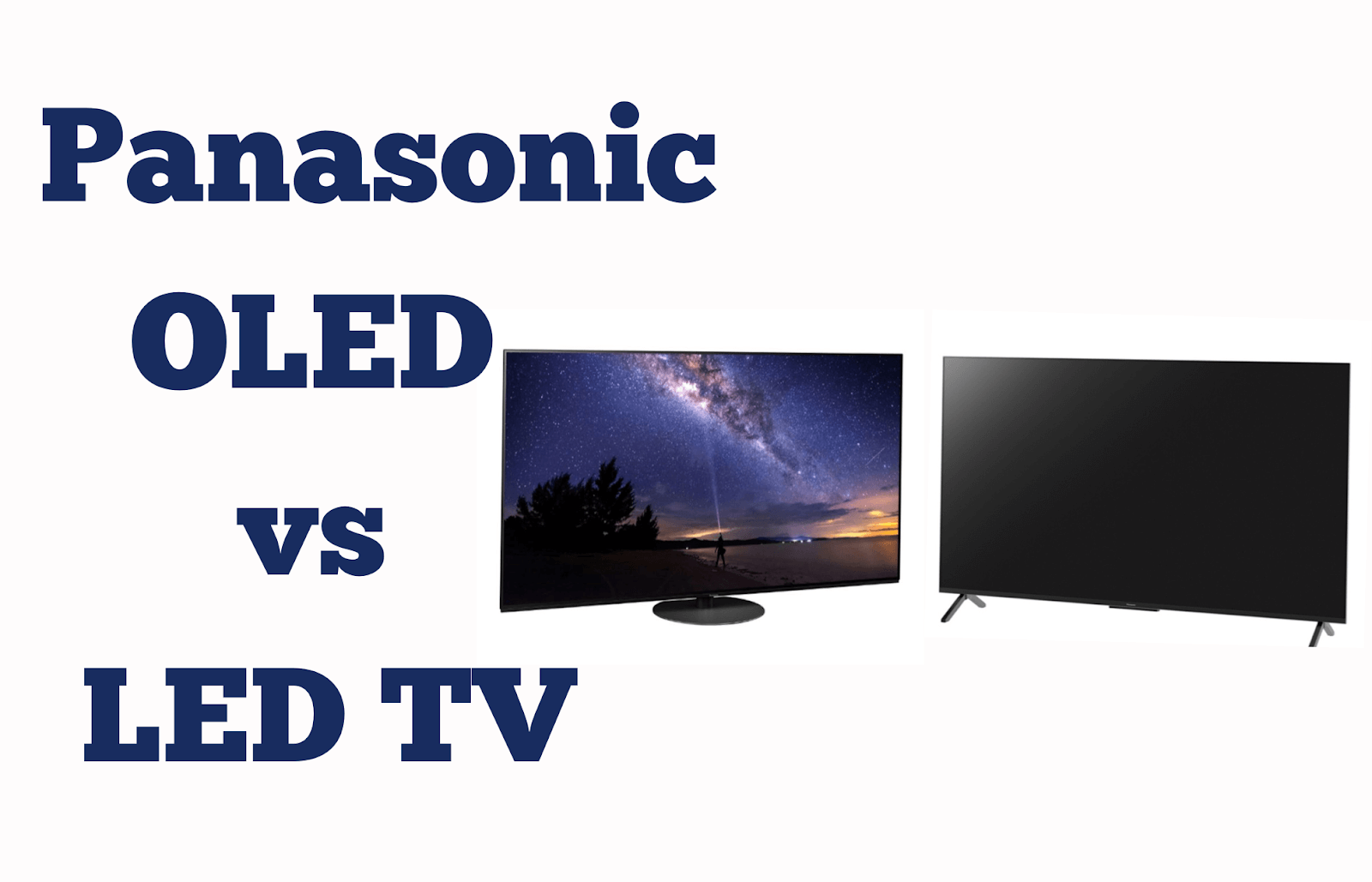Welcome to EMCOR’s Insight, where we delve into the world of technology and bring you the latest comparisons to help you make informed decisions. In this edition, EMCOR PH explains the differences between two cutting-edge television technologies: the Panasonic 65-inch 4K OLED TV and the Panasonic 65-inch 4K LED TV. As the demand for more immersive screens grows, these two models offer impressive features and stunning visual experiences. Join us as we dive into OLED and LED technologies, comparing their strengths and helping you decide which television suits your needs best.
Picture Quality
OLED TV: The Panasonic 65-inch 4K OLED TV boasts remarkable picture quality with its self-emissive technology. It delivers perfect black levels and an infinite contrast ratio, providing a stunning visual experience. The OLED display offers exceptional color accuracy and wide viewing angles, ensuring that every detail is vibrant and accurate. Additionally, its enhanced HDR performance brings out the full potential of high dynamic range content, resulting in vivid visuals that genuinely pop.
On the other hand, the Panasonic 65-inch 4K LED TV excels in brightness and vividness. It produces a vibrant display with sound color reproduction. However, LED TVs have a limited contrast ratio and narrower viewing angles than OLEDs. While they may not achieve the same level of depth and richness as OLED, LED TVs still offer impressive visuals, particularly in well-lit environments.

Display Technology
OLED TV: The 65-inch 4K OLED TV utilizes self-emissive technology, meaning each pixel can emit light or be turned off completely. This pixel-level control allows for perfect black levels and exceptional contrast, as there is no need for a backlight. Consequently, OLED panels can be made incredibly thin, adding to their sleek and modern design.
In contrast, the 65-inch 4K LED TV relies on backlit LCD technology with LED lights positioned behind the panel. This backlight illuminates the pixels, resulting in a bright and colorful display. However, since LED TVs require a backlight, they tend to be slightly thicker than OLED TVs.
Energy Efficiency
OLED TVs: They excel in energy efficiency due to their self-emissive nature. Each pixel emits its light and can be individually controlled, allowing for precise power management. OLED technology is especially efficient when displaying dark scenes, as black pixels do not require any power consumption.
LED TVs: LED TVs, backlit LCD panels, consume more energy than OLED. The backlight is always on, regardless of the content displayed on the screen. Although LED TVs have improved energy efficiency, OLED TVs must be more power-efficient, particularly when displaying darker scenes.
Price
OLED TV: As a premium technology, OLED TVs are more expensive than LED TVs. The superior picture quality and cutting-edge technology come at a higher price point. However, prices can vary depending on the TV’s brand, features, and size.
LED TV: LED TVs, on the other hand, offer a more affordable option for consumers. While they may not match the picture quality of OLED, LED TVs provide a balance between price and performance. They are popular for budget-conscious buyers or those seeking a reliable TV without breaking the bank.
Longevity and Burn-in
OLED TV: One concern with OLED TVs is the potential for burn-in. OLED panels are susceptible to permanent image retention, especially when displaying static images for extended periods. To prevent burn-in, users must exercise caution and avoid leaving static elements, such as logos or news tickers, on the screen for too long.
LED TV: LED TVs are less prone to burn-in issues. They can display static images without the risk of permanent image retention. This makes LED TVs a more worry-free option for those concerned about potential screen damage over time.

Gaming Performance
OLED TV: Gamers will appreciate the fast response time and low input lag of OLED TVs. The individual pixel control and quick pixel transitions ensure a smooth gaming experience. Furthermore, OLED TVs often support advanced gaming features like variable refresh rate (VRR), reducing screen tearing and providing a more immersive gameplay environment.
LED TV: LED TVs also offer competitive gaming performance with low input lag, making them suitable for gamers. However, the availability of features like VRR can vary depending on the specific model, so checking the specifications before making a purchase is essential.
Final Verdict
OLED TV: The Panasonic 65-inch 4K OLED TV is ideal for cinephiles and enthusiasts who prioritize superior picture quality and a truly cinematic experience. It shines in dark room environments and for those who invest in premium technology that delivers breathtaking visuals.
LED TV: The Panasonic 65-inch 4K LED TV is an excellent option for casual viewers and budget-conscious buyers. It balances price, performance, and durability, making it a reliable choice for everyday entertainment. LED TVs provide vibrant visuals that can still impress, especially in well-lit spaces.
FAQ
What is the main difference between OLED and LED TVs?
The main difference lies in the display technology. OLED (Organic Light-Emitting Diode) TVs have self-emissive pixels that can individually emit light, resulting in perfect black levels and infinite contrast. On the other hand, LED (Light-Emitting Diode) TVs use a backlighting system to illuminate the pixels, offering bright and colorful displays.
Which TV technology provides better picture quality?
OLED TVs generally offer superior picture quality compared to LED TVs. OLED TVs produce deep black levels, vibrant colors, and wide viewing angles. The individual pixel control in OLED technology allows for more precise and accurate picture reproduction. LED TVs have a limited contrast ratio and narrower viewing angles while still providing good visuals.
Are OLED TVs more energy-efficient than LED TVs?
Yes, OLED TVs are more energy-efficient compared to LED TVs. OLED technology allows for precise power management as each pixel emits light and can be individually controlled. OLED TVs are especially efficient in displaying dark scenes, as black pixels require no power consumption. LED TVs consume more energy with their backlit LCD panels since the backlight is always on.
Do OLED TVs suffer from burn-in?
OLED TVs are susceptible to burn-in, the permanent image retention of static elements on the screen. For prolonged periods, displaying static images, such as logos or news tickers, can lead to burn-in on OLED panels. To prevent burn-in, it is advisable to vary the content displayed and avoid leaving static elements on the screen for extended periods.
Are LED TVs prone to burn-in issues?
LED TVs are less prone to burn-in compared to OLED TVs. LED TVs use a backlighting system, and the risk of permanent image retention is significantly lower. Users can display static images without worrying about burn-in or long-term screen damage.
Which TV is better for gaming, OLED or LED?
Both OLED and LED TVs can offer a good gaming experience. OLED TVs typically have fast response times, and low input lag, and often support gaming features like variable refresh rate (VRR), making them suitable for gamers who prioritize smooth gameplay. LED TVs also provide competitive gaming performance with low input lag, but the availability of advanced gaming features may vary depending on the specific model.
What factors should I consider when choosing between OLED and LED TVs?
When choosing between OLED and LED TVs, consider your budget, desired picture quality, viewing environment, and specific usage requirements. OLED TVs deliver superior picture quality and are ideal for those who want a cinematic experience. LED TVs offer a more affordable option for casual viewers or those looking to balance price and performance.
Are OLED TVs more expensive than LED TVs?
Yes, OLED TVs are generally more expensive compared to LED TVs. The superior picture quality and advanced technology of OLED panels contribute to their higher price point. LED TVs, a more established technology with broader availability, are more affordable and offer options across different price ranges.
